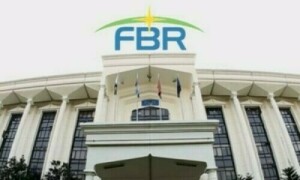KARACHI: The State Bank of Pakistan (SBP), in its monetary policy announced on Monday, kept the policy rate unchanged at 13.25 per cent, pointing to stable inflation. However, the central bank also warned that “fiscal slippage or other adverse developments” could cause inflation to start rising again.
The central bank’s decision to maintain status quo was in line with market expectations, as evidenced in the higher returns on 12-month treasury bills compared to short-term three- and six-months T-bills in the last two auctions.
“The Monetary Policy Committee (MPC) expected inflation to average 11-12pc in FY20,” said the SBP. However, at the same time, the MPC said that based on available information, the current stance of monetary policy was appropriate to bring inflation down to the target range of 5-7pc over the next twenty-four months.
The statement added that in reaching this decision, the MPC considered key economic developments since the last meeting particularly in the real, external and fiscal sectors, and resulting outlook for monetary conditions and inflation.
MPC forecasts inflation to come down in target range of 5-7pc in next two years
The MPC also considered risks to outlook for inflation. “The inflation could rise above the baseline projections in case of fiscal slippage or other adverse developments. On the other hand, inflation could begin to fall earlier than expected if oil prices decline, aggregate demand slows faster than expected, or the exchange rate appreciates.”
The MPC statement said the interbank foreign exchange market had adjusted relatively well to the introduction of market-based exchange rate system.
On the external front, the US Federal Reserve, as anticipated, reduced its policy rate by 25 basis points, followed by policy rate cuts by other major central banks around the world. “This would help in lowering pressures on emerging markets’ currencies and potentially increase financial inflows.”
The external sector continued to show significant improvement with a sizeable reduction of around 32pc (or 1.5pc of GDP) in the current account deficit during the last fiscal year. The trend continued in the first month of FY20 as well.
Specifically driven by an encouraging 11pc growth in exports and 25.8pc contraction in imports, the current account deficit declined to $579 million in July compared to $2.130 billion in the same period last year, it added.
This, coupled with disbursements under the International Monetary Fund programme and activation of the Saudi oil facility, helped build SBP’s foreign exchange reserves, which as of Sept 6, stood at $8.46bn — an increase of around $1.18bn from June, said the MPC report.
“The improvements in the balance-of-payments and market sentiment allowed SBP to reduce its forward short liability position and hence increase its net international reserves,” It added.
While reviewing the real sector, the SBP highlighted recent economic activity indicators, which have shown gradual slowdown in line with earlier expectations.
“The MPC continued to expect average growth in FY20 of around 3.5pc.”
The more pronounced slowdown came in domestic oriented industries such as automobiles and steel also reflected in the Large-scale Manufacturing Index (LSMI), which contracted by 3.6pc in FY19, somewhat more than earlier expectations. On the other hand, the MPC noted that the LSMI does not fully capture activity in some key industries such as high value-added textile products.
Moreover, the statement added that, “the MPC continued to expect that economic activity would gradually turn around as business sentiment improves”.
On the other hand, the committee termed recent developments in the fiscal sector as mixed while adding that revised figures showed fiscal policy as considerably more expansionary in the last fiscal year than expected earlier with a primary deficit of 3.5pc of GDP and an overall fiscal deficit of 8.9pc of GDP.
In addition, tax revenues - net of refunds - had grown considerably in July and August, which suggested that the economic slowdown might not be as pronounced as feared, the statement said.
Published in Dawn, September 17th, 2019















































Dear visitor, the comments section is undergoing an overhaul and will return soon.